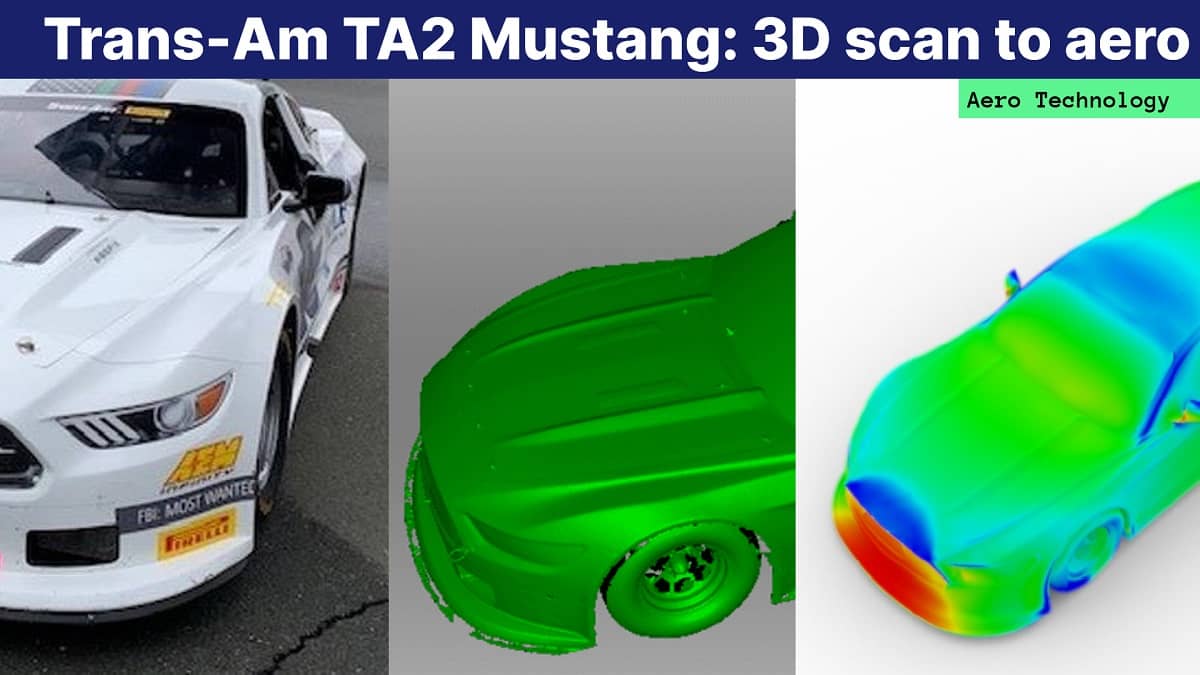

Tim Barber runs a prep shop and race team, TFB Performance, out of Sonoma Raceway in California. TFB Performance provides vehicle preparation, track support and driver coaching to its customers who race in Trans-Am, endurance prototypes, Spec Miata, SRO World Challenge and many more.
Customers who run racecars with aerodynamic packages typically rely on Tim’s team to optimize aero performance. The convenience and affordability of RapidScan and AirShaper allowed Tim to not only access aero data, but analyze the effect of set-up changes quickly and accurately, without investing in wind tunnels or complicated CFD software. Making aerodynamics accessible to a much broader range of racer than ever before.
Establishing an aeromap
The amount of downforce of a racecar varies significantly with ride height and rake. So it is vital to fully understand this relationship if you want to have any chance of establishing an effective set-up over the weekend.
The best way to achieve this is to create an aeromap. This maps aerodynamic properties such as downforce and drag as a function of car set-up such as ride height and rake. These plots help to understand the sensitivities between aero coefficients and car set-up, which is an important tool to utilize to adjust the car.

OEM’s obtain these sensitivities through wind tunnel testing, but this is far too expensive for most small teams and typically requires aerodynamic specialists. Furthermore, the rules in most race categories prevent the use of wind tunnels.
Track testing is the next best option. However, varying weather and track conditions along with other cars on track, make it difficult to run representative comparison tests. Track testing also requires a lot of time from the drivers and as most of our clients have full-time jobs, this is simply not possible.
Consequently, our small team cannot afford the luxury of aerodynamic data, but our customers still rely on our expertise to optimize the aero performance of their cars. Typically, this means spending a lot of time analyzing onboard data and combining it with driver feedback. However, the short race weekend formats and lack of testing makes it incredibly difficult to gain an accurate picture of how set-up changes affect the aerodynamics.
To help solve this problem, we decided to partner with RapidScan and AirShaper for our Trans-Am TA2 program. This is a road race stock car that has simple aero adjustments available. However, getting the set-up right is essential as qualifying and the 100-mile race are run on the same set of tires. So an unbalanced car will unnecessarily wear the tires that already degrade heavily throughout the race.

3D scanning
The first stage was to create a 3D model that could be imported into AirShaper, which involved 3D scanning one of our TA2 cars. This required no preparation from our side, and within a day Richard Feijoo, 3D solutions specialist from RapidScan, scanned the entire car from top to bottom. This scan was then converted into a 3D surface model, ready for simulating in AirShaper.

Simulating in AirShaper
Within minutes, I had imported the 3D model into AirShaper and adjusted the set-up parameters of the simulation. I modelled a range of different car configurations with two main objectives. One was to understand how much ride height affected straight line drag, and the other was to quantify how much rake affected downforce.
Being able to quantify the aerodynamic performance from a given ride height or wing change is invaluable. This was the first time that we were able to achieve this with reliable data rather than using educated guesses. The results from AirShaper also benefitted our drivers, as we could explain what to expect instead of them having to rely on feeling the changes themselves.

To understand the results in more detail, I was able to connect with AirShaper online where a specialist walked me through the data and the various models they created for our car. The PDF report provided, was also really useful. It presented the results in an understandable way and included a wide variety of colour maps illustrating surface pressure, surface friction, velocity streamlines, pressure clouds and even noise analysis. Within a few simulations we had quantitive values of the aero effect of set-up changes, without the need for wind tunnel or track tests.
Beyond lap time
Drivers and teams typically prioritize speed and lap time first, but the AirShaper data can also be used to improve cooling and reliability. For example, in Trans-Am TA2, there are a number of different options for radiator and brake duct openings. By using the simulation results, we were able to adjust these openings to the optimum position that allowed enough air flow for cooling, whilst maintaining maximum downforce and minimising drag.
Furthermore, the regulations specify that the overall surface of our TA2 car has to meet body templates, but we are allowed to design and manufacture our own airbox and ducting. Again, using the data from RapidScan and AirShaper we simplified our build process and can now quantitatively say that we have the best aerodynamic option available. I'm looking forward to running some more cars through this process so that we can optimise the aerodynamic performance of those too!



